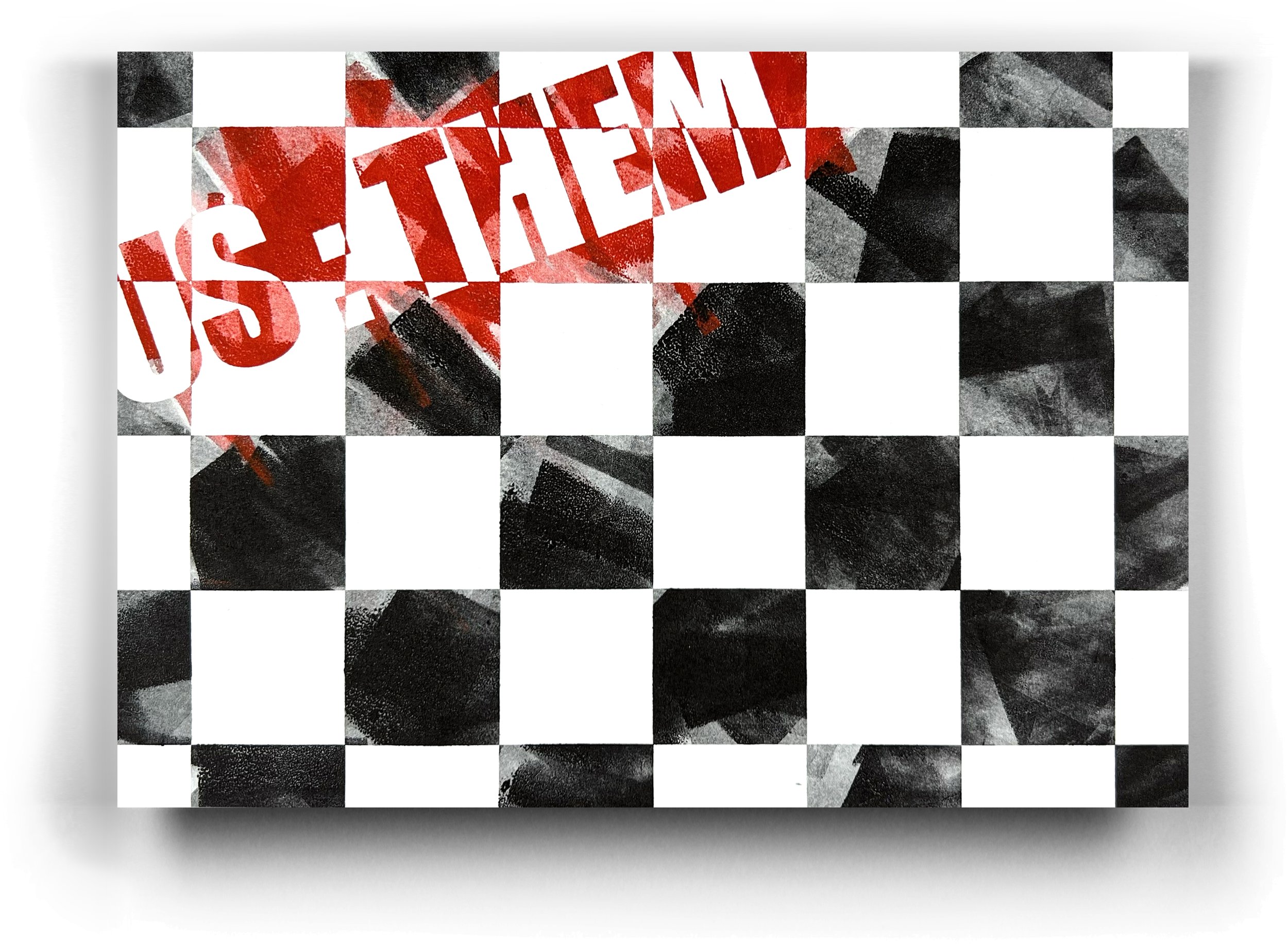This is a story that should likely share between Lead Graffiti and APHA. But it is much easier to put these long stories with many photos on Lead Graffiti’s website.
Ray is a member of the programming committee of the Chesapeake Chapter of the American Printing History Association. As part of sharing that responsibility, he engaged one of Lead Graffiti’s favorite letterpress printers, Jan-Willem van de Looij (which seems to be pronounced like “Louie”), who is from The Netherlands. We have a strong connection with a former letterpress printer, H.N. Werkman, and the link to the country strengthened.
⬆ Jan-Willem van der Looij of Misdruk in The Netherlands.
⬆ Jan-Willem demonstrating his incredible Johannisberg Schnellpresse (maximum papersize 110 x 74 cm) from 1906. I might have to think about getting new pants, but then I don’t tend to shop in stores that have that kind of pants. I did do a letterpress spread that used the same pattern.
⬆ Ray’s spread in a collaborative book by 14 Upper Chesapeake Book Arts members.
⬆ This was the result of his printing demo. The last line of the broadside is “you don’t need.”
Misdruk’s story :
Misdruk starting with small-offset printing assisting my dad with his leaflets on beekeeping. Later on I did some screenprinting ending up in letterpress printing for the last 26 years as a hobby in our garage.
Becoming a bad printer didn’t take up much time for me I have to admit... I probably always was:-) I have been connected with printing all of my life in one way or another. Starting with small-offset printing assisting my dad with his leaflets on beekeeping. Later on I did some screenprinting ending up in letterpress printing for the last 26 years as a hobby in our garage. I always had a fascination for aspects in production that went wrong. When I visited print-factories in the past I discovered that I was always looking in the recycle bins. The misprints I found in there intriguied me. For me these ‘bad’ prints carried an extra dimension: some sort of disobedience to the printer and graphic designer or so. In the professional world these misprints are always discarded whilst being of an exiting beauty I think. Some 8 years ago I saw the light and I quit my professional career and I started with my “Mizdruk” printshop in Eindhoven, Holland. Mizdruk means misprint in Dutch. Here started my adventure into the world of imperfect beauty in print. At first I thought I was the only one in the world having this weird kind of interest in misprints. Later on I discovered that there were more lovers and likers of printed shit. Well let’s call it Bad Printing. Fortunately this interest is not limited to Europe nor The United States but also the Southern Americas and Australia are getting more and more involved. 4 years ago this resulted in the founding of “The School of Bad Printing” together with Ro Barragán and Amos Paul Kennedy Jr. We have just started this venture and there is much more to come. I just moved all my gear from Eindhoven to my new premises in Aarle-Rixtel a cute small village nearby. Time for a new chapter in my Bad Printing experiments.
Below are a few Misdruk samples we’ve collected over the past half-dozen years.
⬆ Misdruk is made up of 3 letterpress printers on 3 different continents.
Jan-Willem van der Looij, The Netherlands, Europe / Instagram
Ro Barrigán, South America / Instagram
Amos Kennedy, Detroit, North America / Instagram
Try Misdruk’s website.
Try his Instagram site. Recently including a visit from Amos Kennedy.
The image above is by Amos Kennedy.




























